Scientific name: Tilia americana
Tilia = comes from the Latin name of the linden or lime tree in the writings of Roman agricultural authors Virgil (Georgics) and Columella (De Re Rustica – “on agriculture”).
americana = From the word america, and the suffix -ana meaning “a collection of things”, referring to this species originating from America.
Basswood is found throughout southern and central Ontario, going as far north as Lake Nipissing and Sault St. Marie. The buds from this tree are an important food source for deer and birds in the wintertime, and their fruit is eaten by many birds and small mammals. The wood from Basswood is known to decay quickly, often producing many cavities (especially in trees past 120 years old) which are used by many cavity-nesting animals such as birds, like the pileated woodpecker, and small mammals. Pollinators are particularly fond of this tree as their flowers bloom in midsummer when few other tree species do.
Basswood prefers moist soils that are rich and well-draining. They can be grown in full sun or shade. Basswood can grow up to 35 meters tall and can live to be over 200 years old. This tree produces very nutrient rich leaves which, instead of raking up and disposing of them in the Fall, can be mulched with a lawnmower and used as a natural fertilizer for other trees and plants.
Basswood is valued for its soft and easily workable wood, especially for hand carving and turning. To see the process of wood turning in action see "Woodturning - A basswood bowl in real time" or "Woodturning - 3 items using basswood". Basswood was even used to make prosthetic limbs in the early 1900’s before synthetic materials were created. Indigenous people and early settlers used the fibrous bark as a material for fiber rope, mats, fish nets, and baskets. The sap, which contains a moderate amount of sugar, was boiled down into a syrup or enjoyed as a watery beverage. The cambium (the plant tissue that contributes to the active growing layer of the plant) was also used in soups and breads.
Check out How to grow and care for basswood for more information on this species.
Sources:
Bissanti, G. 2023. Tilia americana. [online] Available: https://antropocene.it/en/2023/03/12/tilia-americana-2/
OMNR, 2022. Ontario Ministry of Natural Resources: Ontario Tree Atlas. [online] Available: https://www.ontario.ca/page/basswood
OMNR. Ontario's Tree Atlas. [online] Available: https://pecmastergardeners.ca/wp-content/uploads/2020/07/Ontarios-Tree-Atlas.pdf
University of Guelph. The Arboretum: American Basswood - Tilia americana [online] Available: https://arboretum.uoguelph.ca/thingstosee/trees/americanbasswood
USDA. 2001. Plant Guide - BASSWOOD. Natural Resources Conservation Service. [online] Available: https://plants.usda.gov/DocumentLibrary/plantguide/pdf/pg_tiamh.pdf
%20938-3611%20info%40rrca_on_ca%20rrca_on_catrees%20(400%20%C3%97%20200%20px)%20(1).jpg)


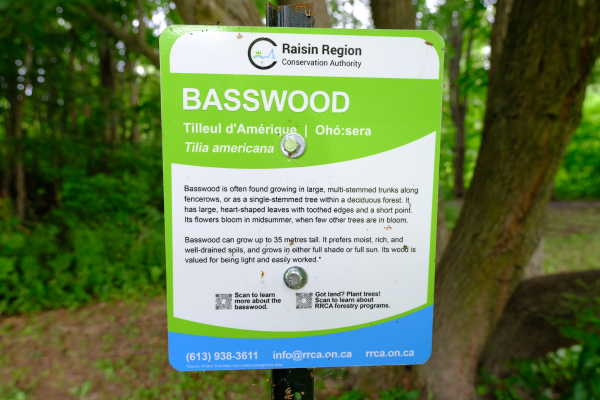 American basswood is one of only two members of this genus present in the western hemisphere, the other being T. caroliniana (Carolina basswood).
American basswood is one of only two members of this genus present in the western hemisphere, the other being T. caroliniana (Carolina basswood).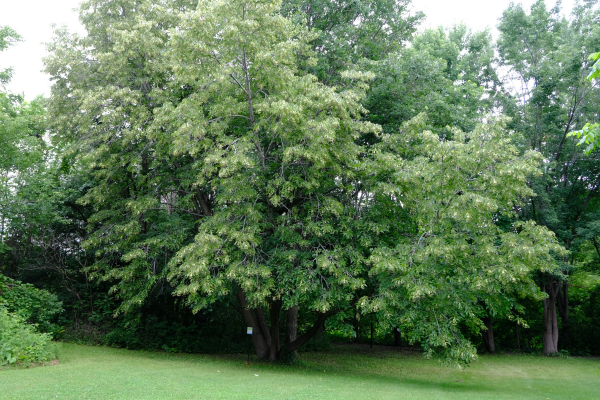 Basswood can grow as a single or multi-stemmed trunk. This specimen at Gray’s Creek Conservation Area is multi-stemmed, consisting of six trunks!
Basswood can grow as a single or multi-stemmed trunk. This specimen at Gray’s Creek Conservation Area is multi-stemmed, consisting of six trunks!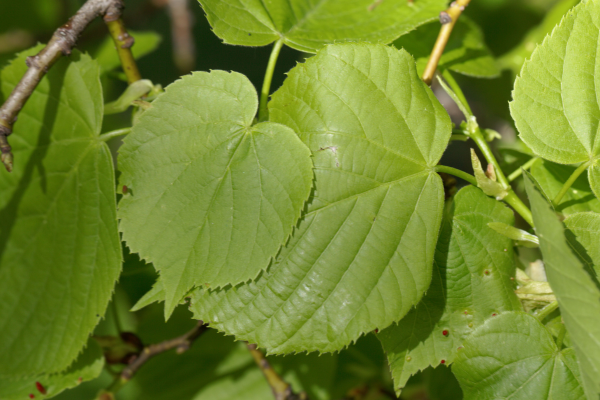 Basswood has large, heart shaped leaves with serrated edges that end in a sharp point.
Basswood has large, heart shaped leaves with serrated edges that end in a sharp point. 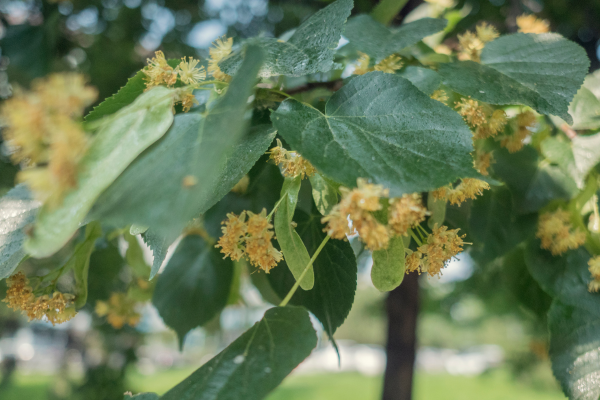 Basswood produces fragrant yellow flowers that hang from the center of a leaf like structure (called a bract).
Basswood produces fragrant yellow flowers that hang from the center of a leaf like structure (called a bract).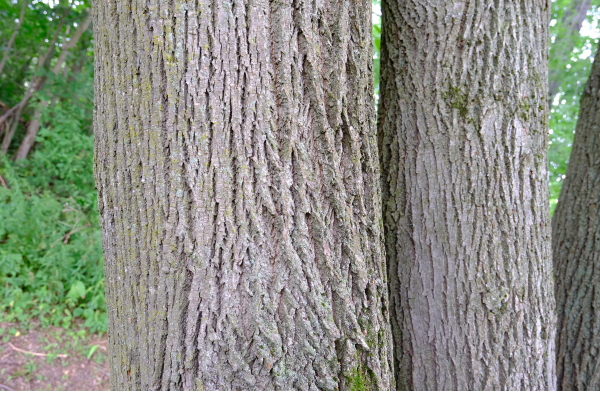 When young, the bark is smooth and grey green in colour. When mature, the bark is rigid with long, shallow grooves and flat ridges.
When young, the bark is smooth and grey green in colour. When mature, the bark is rigid with long, shallow grooves and flat ridges.